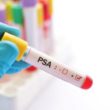Changes in prostate-specific antigen testing relative to the revised US Preventive Services Task Force recommendation on prostate cancer screening

Decreases in PSA testing followed the 2012 USPSTF grade D recommendation on PSA testing and have been associated with increasing proportions of higher-stage disease and increasing incidence of metastatic disease. In April 2017, the US Preventive Services Task Force (USPSTF) published a draft guideline reversing its 2012 guidance advising against prostate-specific antigen (PSA) screening for prostate cancer in all men, instead endorsing individual decision-making for men aged 55-69 years.
This goal of this study was to evaluate changes in rates of PSA testing after revisions in the USPSTF guidelines were published.
This retrospective cohort study used de-identified claims data from privately insured patients. The median age of all included patients was 53 years. After the guideline change by USPSTF, the rate of PSA testing increased by 12.1% among men aged 55 to 69 years, the age category targeted by the revised guideline. Increases were also observed among men aged 40-54 years and those older than 70 years, age groups for whom screening is not recommended or is discouraged by the USPSTF.
The study did not examine changes in associated diagnostic procedures, incident prostate cancer cases, or stage at diagnosis. The privately insured patient cohort may not reflect all populations because it is skewed toward younger and more socioeconomically advantaged patients with employment-based insurance. Additionally, because patient data was anonymous, patient race and family history were not assessed. Further study is needed to assess whether PSA testing differed by race or other sociodemographic categories. The year 2019 was the last year insurance data was available so the impact of the COVID-19 pandemic on rates of cancer screening, including PSA testing were not analyzed.
However, the study results were a first evaluation of changes in PSA testing after updates to the USPSTF guideline on prostate cancer screening and can inform estimates of the outcome of the USPSTF statement change. These results indicate that PSA screening increased across all age groups measured following the USPTF’s upgrading their guidance on PSA screening, even among men over age 70, for whom the task force’s guidelines recommend against screening.
JAMA Oncology 2022; Jan Volume 8, Number 1.
















